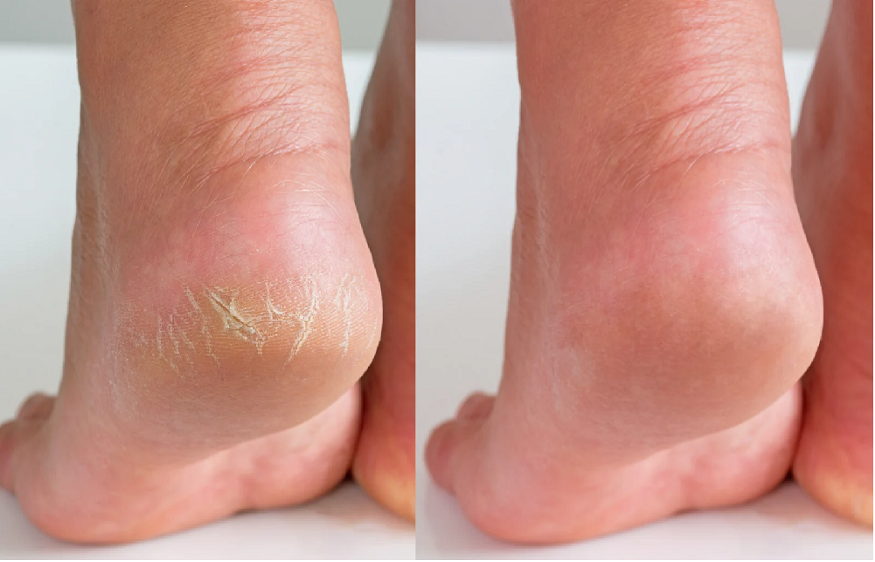Cracked feet aren’t exactly pretty, but they seldom cause significant problems. However, in rare cases, badly damaged heels can get infected and cause cellulitis, a skin infection. Whatever the reason for your cracked heels, there are treatments available. You may also take preventative measures to keep your heels from breaking in the first place.
Causes
Cracked heels can begin when the skin surrounding your heels gets dry and thick. Extra strain on the fat pad of your heels might develop cracks or heel fissures in the dry, thick skin. While heel fissures can occur in anybody, some factors make them more prevalent, including:
- Wearing open-toed shoes, such as sandals
- Bathing or showering with hot water
- Using abrasive soaps
- Dry skin
- Cold and dry weather
- Long periods of standing
Some medical issues might also cause cracked heels. These are some examples:
- Obesity
- Diabetes
- Eczema
- Hypothyroidism
- Juvenile plantar dermatosis
- Sjögren’s syndrome
- Athlete’s foot
- Flat feet
Home Treatments
Most cracked heels may be cured at home by soaking and hydrating your feet. Follow these steps to heal damaged heels:
- For 20 minutes, soak your feet in soapy water.
- Scrub your heels gently with a loofah or pumice stone to remove the thick, hard skin.
- Dry your feet thoroughly.
- Apply a thick moisturiser to your dry feet, such as petroleum jelly.
- Wear thick socks to keep the moisturiser in place.
It would be best if you moisturised your feet at least twice a day. Over-the-counter moisturisers containing chemicals that help exfoliate dead skin on your heels or preserve moisture are available. Look for goods that have the following ingredients:
- The substance hyaluronic acid
- Lactic acid
- Petrolatum
- Oil of jojoba
- Shea nut butter
Lotions may not be as effective as ointments or creams.
When Is It Time to See a Doctor About Cracked Heels?
Consult your doctor if your heels are seriously damaged or do not improve after a week of treatment. A podiatrist, a specialist who specialises in foot, ankle, and lower limb issues, may be able to help you. Among the possible treatments are:
- Strapping. This is wrapping a bandage or dressing around your heel to protect your skin from shifting.
- Debridement. A medical practitioner will remove the thick, hard skin on your heels during this operation. Don’t attempt to do this on your own. You may remove too much skin, resulting in an infection.
- Prescription drugs. Your doctor may prescribe a more potent cream than what is available over-the-counter. Prescription creams often have more active chemicals, such as urea or salicylic acid.
- Skin adhesive. To keep the margins of the heel fissures together, your doctor may apply a skin-safe glue. This can help them heal.
- Inserts for shoes. By dispersing the weight on your heel, insoles in your shoes may give better support. This will keep the fat pad from spreading backwards and damaging your heels.




